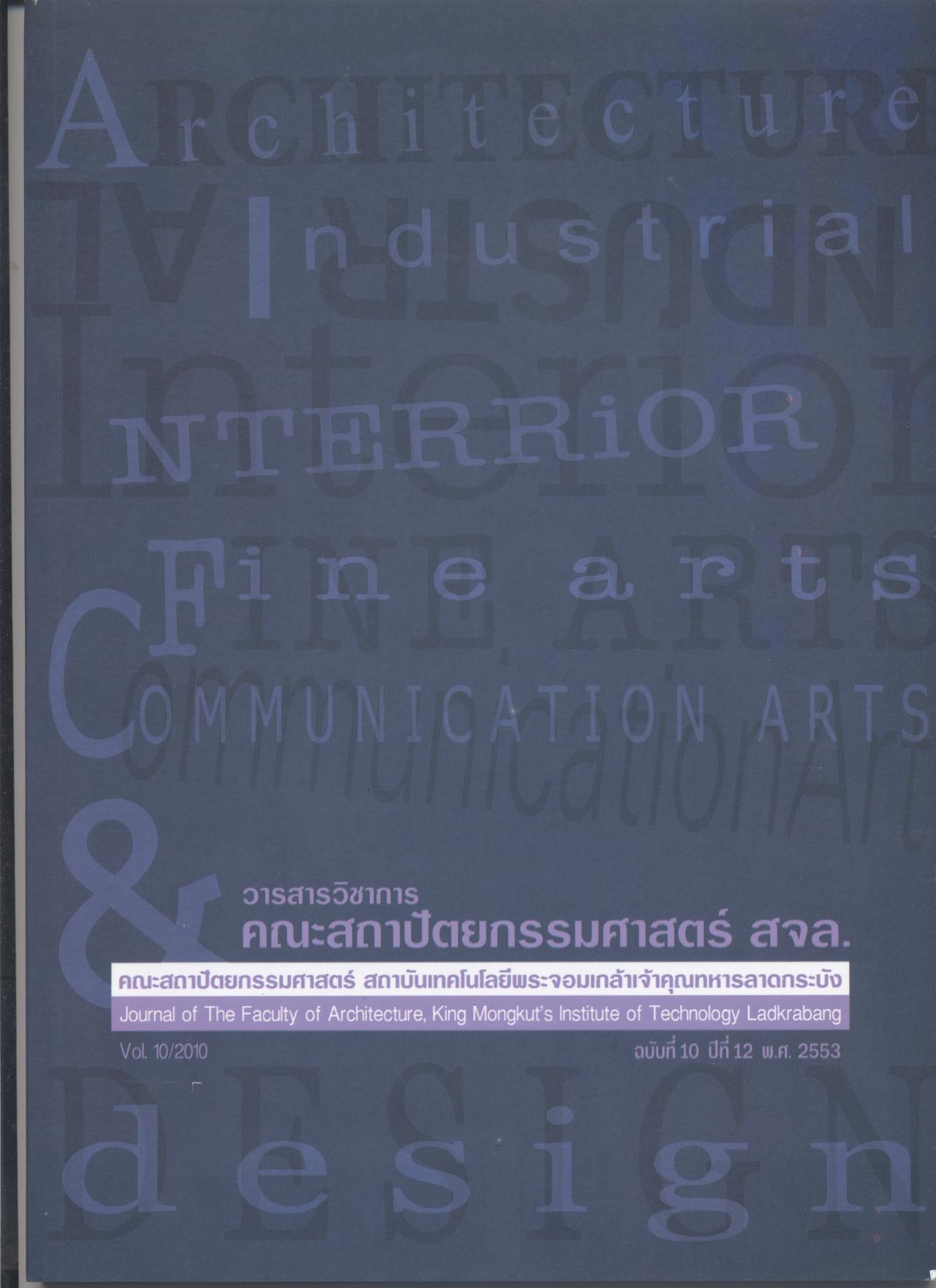บทบาทของศิลปะที่มีต่อคุณภาพชีวิตของนักศึกษามหาวิทยาลัยธรรมศาสตร์
Main Article Content
Abstract
บทคัดย่อ
การวิจัยนี้มีวัตถุประสงค์เพื่อเสนอแนะแนวทางการนำบทบาทศิลปะเข้ามาช่วยพัฒนาคุณภาพชีวิตของนักศึกษามหาวิทยาลัยธรรมศาสตร์ โดยใช้แบบสอบถามสำรวจความคิดเห็นของนักศึกษาในคณะที่มีความเกี่ยวข้องกับศิลปะจำนวน 3 คณะ ได้แก่ คณะสถาปัตยกรรมศาสตร์และการผังเมือง คณะศิลปกรรมศาสตร์ และคณะวารสารศาสตร์และสื่อสารมวลชน ด้วยการสุ่มตัวอย่างแบบโควต้า จำนวน 600 คน จากกลุ่มตัวอย่างนักศึกษาปริญญาตรีทั้งสามคณะในสัดส่วนเท่ากัน ซึ่งจากการศึกษาถึงบทบาทศิลปะที่มีผลต่อคุณภาพชีวิต พบว่า แม้นักศึกษาส่วนใหญ่จะมีความพึงพอใจต่อคุณภาพชีวิตมาก และมีความคิดเห็นว่าศิลปะมีส่วนช่วยในการพัฒนาคุณภาพชีวิต แต่นักศึกษาต่างทำกิจกรรมเกี่ยวกับศิลปะไม่มากนัก ดังนั้นแนวทางในการนำบทบาทของศิลปะมาช่วยพัฒนาคุณภาพชีวิตของนักศึกษาสรุปได้เป็น 3 หมวด คือ การเรียนการสอน สภาพแวดล้อมในการเรียน และกิจกรรมของมหาวิทยาลัย
คำสำคัญ : บทบาทของศิลปะ, คุณภาพชีวิต, นักศึกษามหาวิทยาลัยธรรมศาสตร์
Abstract
This research aims to give suggestion on bringing arts-role as a tool to develop the quality of Thammasat University students’ lives. Research methodology is quantitative research using questionnaire surveys on art-related faculties that are Faculty of Architecture and Planning, Faculty of Applied Art, and Faculty of Journalism and Mass Communication, with 600 respondents from sampling of undergraduate students from the three faculties in equivalence. According to the study on arts-role and its effects on living quality, the findings showed that even most students had high satisfaction in living quality and agreement on art as a tool for living quality development, but they had not been engaged with many of art-related activities. Thus, guidelines from this research’s findings for bringing arts-role to develop students’ living quality can be concluded into three main categories that are teaching and learning, learning environment, and university’s activity.
Keywords : Arts-Role, Quality of life, Thammasat University Students
Article Details
This work is licensed under a Creative Commons Attribution-NonCommercial-ShareAlike 4.0 International License.
Copyright Transfer Statement
The copyright of this article is transferred to Journal of The Faculty of Architecture King Mongkut's Institute of Technology Ladkrabang with effect if and when the article is accepted for publication. The copyright transfer covers the exclusive right to reproduce and distribute the article, including reprints, translations, photographic reproductions, electronic form (offline, online) or any other reproductions of similar nature.
The author warrants that this contribution is original and that he/she has full power to make this grant. The author signs for and accepts responsibility for releasing this material on behalf of any and all co-authors.

